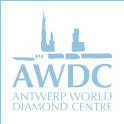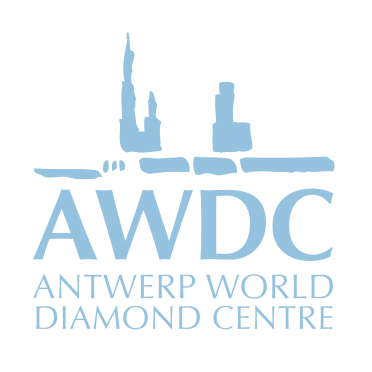- Home
- What we care about
- Compliance
- Supply chain due diligence
Supply chain due diligence
AWDC’s key strategic priorities are to promote a sustainable and transparent diamond industry. Antwerp continues to lead the industry as a diamond trading center that does not compromise on integrity and quality. AWDC closely monitors the supply chain risks in the value chain and acknowledges the practical compliance and sustainability challenges of the Antwerp diamond traders in their day to date business. That’s why we have developed concrete and pragmatic guidance for you.
How to use it:
We have prepared for you the following three documents:
- Antwerp diamond industry supply chain policy: This template is ready for you to easily use. Fill in your key company specific information into the template. The policy template sets out the key due diligence measures that you should have in place to actively monitor and manage your supply chain risks. You can publish this policy on your website and share with clients and suppliers.
- Supply Chain Implementation guidance: Of course you have to practice what you preach in your policy! Make use of this guidance to understand how your supply chain policy can be implemented through concrete and practical steps.
- Sustainability risk assessment
The policy and implementation guidance serves as a clear and pragmatic guidance for diamond traders who wish to have the most important due diligence measures in place. We also integrated to the most important existing initiatives in the industry related to supply chain due diligence (Kimberley Process Certification Scheme, System of Warranties, ..) We encourage you to implement these measures and, where relevant, to adjust these measures to your specific circumstances and due diligence ambitions.
Contact us for questions:
For any questions on the policy and implementation guidance, read the FAQ under or reach out to your AWDC contact:
Trisevgeni Stavropoulos
Head of Compliance
+32 3 222 05 03
What is supply chain due diligence?
The term ‘due diligence’ means acting with reasonable care, identifying risks and considering appropriate corrective actions before making a decision.
In the context of diamonds, supply chain due diligence is basically a process that helps you to identify and address certain risks in your supply chain, such as human rights abuses, negative environmental impacts, forced (child) labor, .. Basically, it helps you to check if the diamonds that you are buying, are sourced responsibly.
How much time do I need to conduct due diligence?
Performing robust due diligence requires time and resources. The extent of time and resources needed depends largely on the set-up of your due diligence management practices and the complexity of your business and supply chain.
The AWDC Supply Chain Policy and Implementation Guidance is meant to provide easy, clear and pragmatic support for you to perform effective and efficient due diligence. The Guidance builds to the extent possible on existing AWDC policies and diamond-specific processes and regulations.
What is the OECD 5 Step Framework?
The OECD 5 Step Framework is a concept from the OECD Due Diligence Guidance for Responsible Supply Chains of Minerals from Conflict-Affected and High-Risk Areas. This guidance forms a global reference framework with which to conduct robust due diligence based on the following 5 steps:
- Establish strong company management systems;
- Identify and assess risk in the supply chain;
- Design and implement a strategy to respond to identified risks;
- Carry out independent third-party audit of supply chain due diligence at identified points in the supply chain;
- Report on supply chain due diligence.
Note that most responsible sourcing and due diligence frameworks (e.g. RJC) are based on the OECD 5 Step Framework.
Is supply chain due diligence obligatory?
EU legislation is being drafted as we speak and thus supply chain due diligence will likely be obligatory for diamond companies very soon. For now it is considered best practice and strongly recommended.
Can I source diamonds from a CAHRA (Conflict-Affected and High-Risk Areas) country responsibly?
Yes, you can source from suppliers that are located in a CAHRA country.
Suppliers from CAHRA countries are generally associated with higher risks regarding the commitments in your Supply Chain Policy. Hence, given the higher risks, you should perform more robust and more frequent due diligence on your suppliers from a CAHRA country to be comfortably sure that your suppliers are compliant with your policy.
How can I best report to my customers about my supply chain due diligence?
Sharing your Supply Chain Policy with your business partners can be an easy way to communicate your supply chain commitments and how you perform due diligence.
Some companies also choose to write an annual performance report for their stakeholders to provide a clear overview of the due diligence measures taken during a reporting year (this corresponds to the Step 5 in the OECD 5 Step Framework). A report template can be found in the RJC Toolkit.
What should I do if my supplier does not provide requested due diligence information?
Requesting key due diligence information should be done to the best of your abilities. A key step to obtain due diligence information from your supplier is to engage with the supplier:
- Share your supply chain policy and explain why due diligence is important to you;
- Outline clearly your expectations from your supplier to provide you with key due diligence information
- Explain that suppliers that don’t share key information might be treated by you as a high risk supplier which could result in the end of the business relationship.
Engage directly with your supplier to clearly indicate what information is needed, when, how and why. You can also use public information (e.g. Bureau van Dijk, media, …) to obtain key information when a supplier is not able/willing to share due diligence information.
What are the main risks related to buying diamonds directly from a mine and how can I best respond?
Sourcing diamonds from a mining company allows you to clearly establish the origin of the diamonds. When performing your due diligence, ensure that you address the potential risk of illicit diamonds being mixed with diamonds that are mined ethically and legally compliant.
Key risks from buying from a mining site relate to the mine site location and how the mining site is managed. Regarding the location, you should apply more robust due diligence if the mine is located in a CAHRA country. This can suggest a higher risk of conflicts, weak governance and human rights abuses which you should ask your supplier about. Regarding the management of the mine site, typical key risks can relate to potential human rights abuses of workers and communities, human rights breaches of security forces, potential links to conflicts and illicit governance practices.
What are the main risks related to buying synthetic diamonds and how can I best respond?
Risks related to sourcing synthetic diamonds are different from risks associated to sourcing natural diamonds. Synthetic diamonds are not mined, but various supply chain risks could be associated to synthetic diamonds throughout the supply chain. It is important you perform a robust assessment of the diamond origin and type to distinguish natural from synthetic diamonds and depending on the type of diamonds take appropriate steps to manage the supply chain risk.
How can I best respond to customers who want to understand how I conduct due diligence?
Responsible and ethical sourcing of diamonds is a fast growing expectation from customers. Communicate your Supply Chain Policy to your customers. This policy answers the most common and important questions as it sets out your commitments and how you live up to those commitments. Consider proactively sharing your policy with customers and/or publish the policy (e.g. on your company website). You can use the AWDC Supply Chain Policy template.
Is it sufficient if I purchase my rough diamonds with a Kimberley Process Certificate and import my goods through the Diamond Office?
No, while purchasing diamonds with a Kimberley Process Certificate (KPSC) and import through the Diamond Office (DO) are important measures to ensure diamonds are conflict-free and don’t involve conflict financing, they don’t provide you with sufficient comfort that other essential supply chain risks are sufficiently controlled.
In addition to the KPSC and DO, due diligence should be performed to ensure your diamond trader(s) and/or mine(s) from which your purchase your stones respect your key other commitments, e.g. related to human rights, anti-bribery and corruption, money laundering or finance of terrorism. Use the AWDC Implementation Guidance to support you.
Is it sufficient if I just check the presence of the warranty of the World Diamond Council on my supplier’s invoices and complete the self-assessment questionnaire of the System of Warranties?
The System of Warranties of the World Diamond Council requires that all buyers and sellers of rough diamonds, polished diamonds and jewelry containing diamonds include a statement on B2B invoice and memos that the goods being sold are in compliance with the KPCS. It now also includes a commitment that the buyers and sellers adhere to WDC Guidelines, which support universally accepted principle of human and labor rights, anti-corruption and anti-money laundering (AML). The World Diamond Council also created a toolkit based on self-assessment questionnaires, which will assist members of the industry in properly evaluating how they are complying with the process. It will take into consideration the stage or stages of the diamond and jewelry value chain in which the member is involved, the size of the member’s business, and whether the member is already compliant with other due diligence systems, like that of the Responsible Jewellery Council.
Complying with the System of Warranties is an important part of your supply chain due diligence and recommended. Nevertheless, we advise traders to use AWDC’s Supply Chain Implementation Guidance to address risks in the supply chain in the broadest sense.
What are the similarities between anti-money laundering (AML) and supply chain due diligence?
Although AML merely focusses on preventing incoming flows of money of criminal origin from the clients’ side and supply chain due diligence focusses on the origin of the product and the risks related thereto, there are some similarities. First, the steps that need to be followed to comply with AML legislation are very similar to supply chain due diligence: setting up internal management processes, identifying clients/suppliers, identifying and mitigating risks,.. Second, the information gathered from suppliers regarding AML legislation, can be a useful source of information when engaging with the same supplier from a supply chain risk perspective.
What are CAHRA countries?
CAHRAs are defined as areas which are in a state of conflict (including armed aggressions), which have weak or no governance or security and areas with widespread human rights abuses and violations of law.
We refer to the Responsible Jewellery Council COP 7 for a list of websites where you can find information about CAHRAs: https://responsiblejewellery.com/support/cop-2019-walkthrough/provision-07/
Additionally information about CAHRAs relevant for the diamond industry can be found in publications on the website of (IPIS) International Peace Information Service https://ipisresearch.be/
How am I supposed to know if the diamonds that I purchase are coming from a CAHRA and assess if my purchase is linked to an unacceptable risk?
Use the AWDC supplier’s template and ask your supplier about the origin of the diamonds. In addition, inform yourself on CAHRAs in the diamond industry. We refer to the Responsible Jewellery Council COP 7 for a list of websites where you can find information about CAHRAs: https://responsiblejewellery.com/support/cop-2019-walkthrough/provision-07/ and the website of (IPIS) International Peace Information Service https://ipisresearch.be/. Based on your research assess if the risk is acceptable, unacceptable or request your supplier for additional information.





